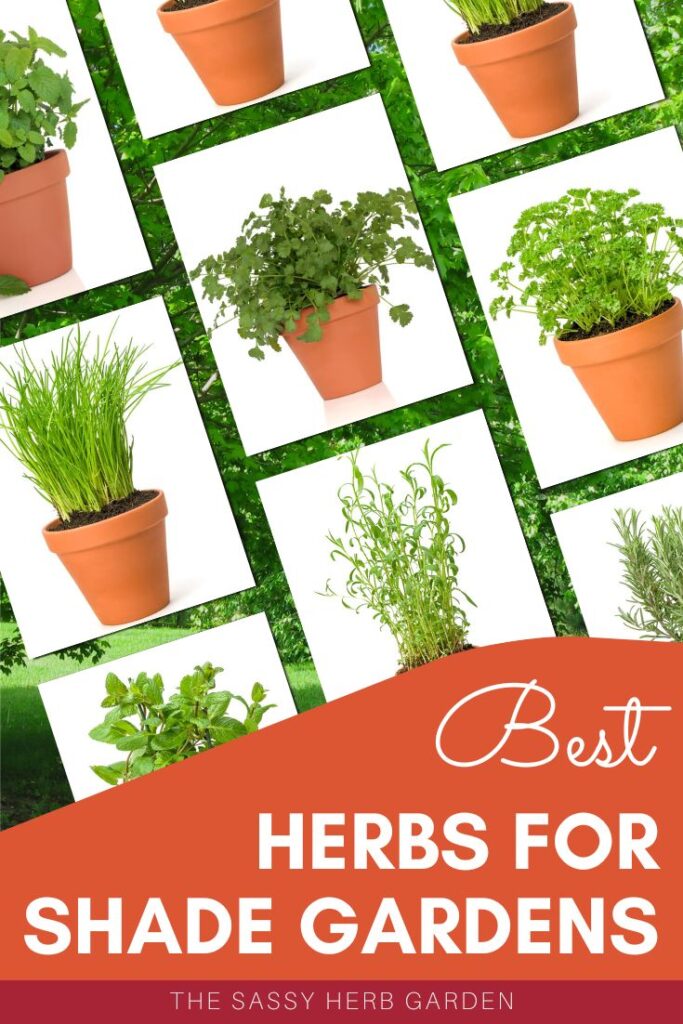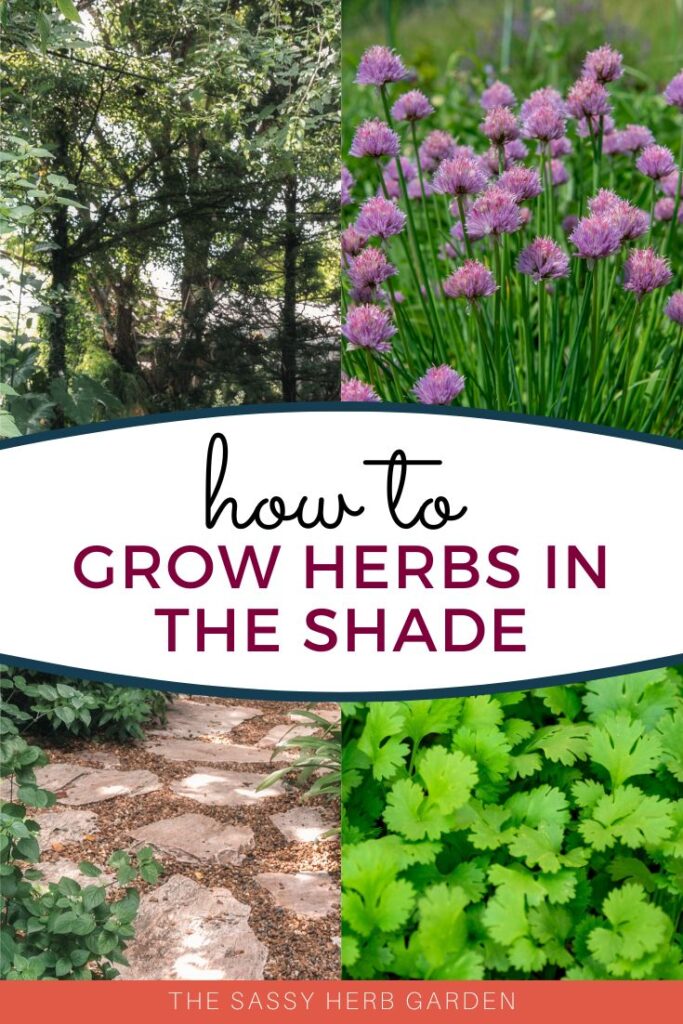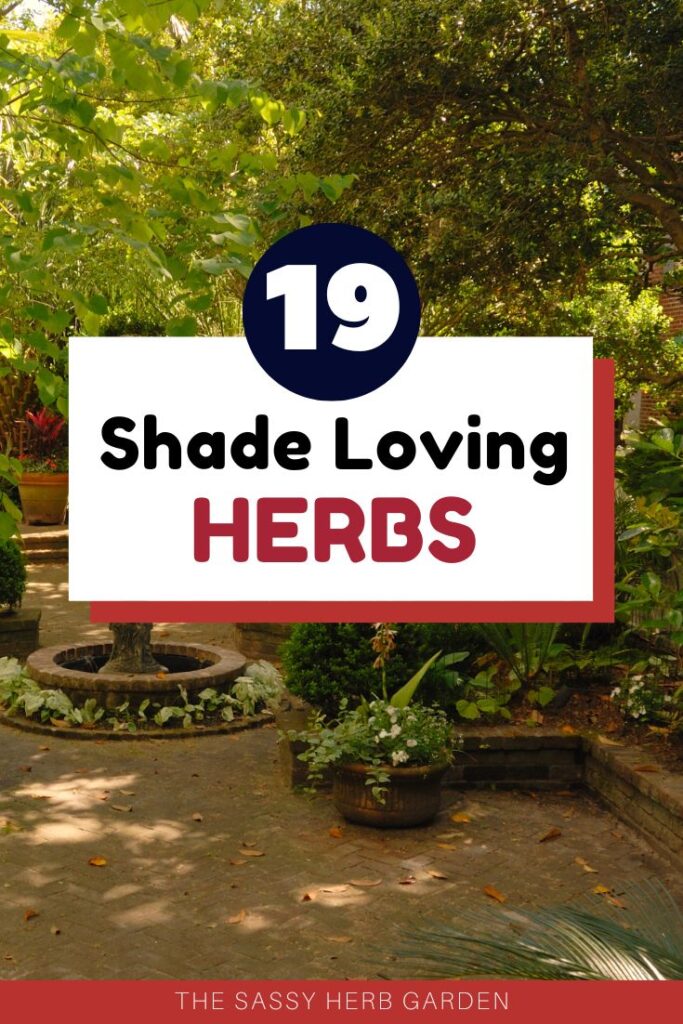As a gardener who lives in the woods, I completely understand your frustration with trying to grow herbs in the shade. But don’t fret… there are solutions. In this article, I’m going to cover the herbs that will grow in the shade. Then I’ll share the special care you can give to your shady herb garden to help to many sun-loving herbs thrive. You don’t have to compromise your desire to have a flourishing herb garden just because you lack the perfect sunny spot.
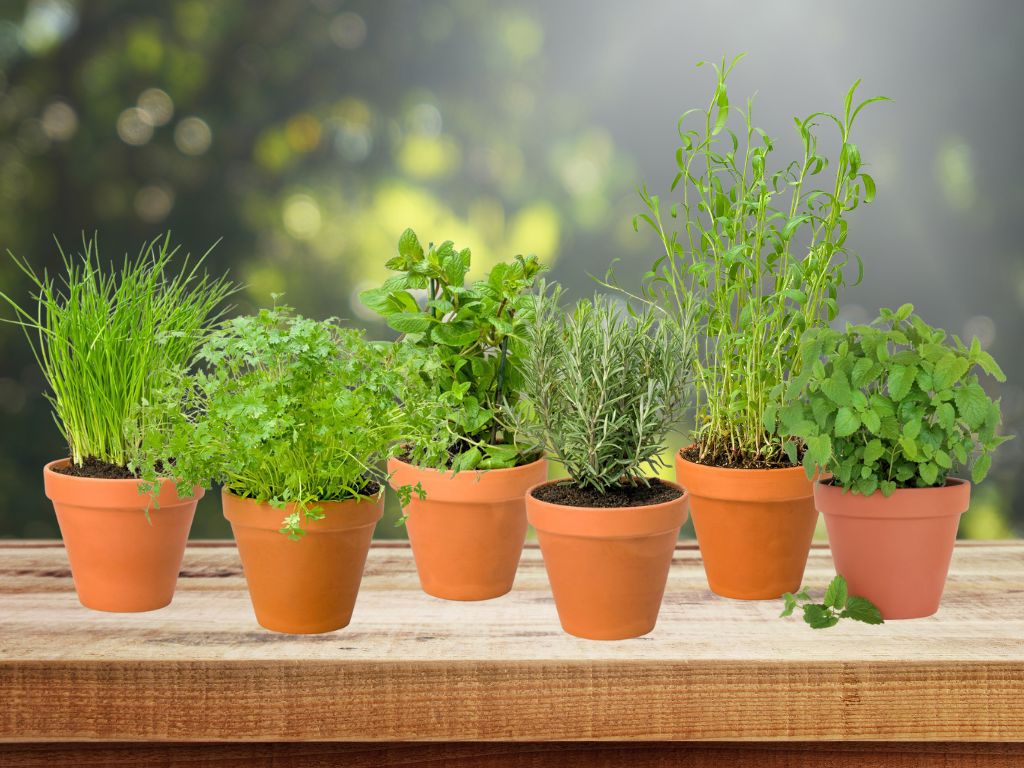
You can create a lush and thriving herb garden, despite the challenging light conditions, by selecting the right herbs that grow well in the shade. Your shady garden can become a diverse and aromatic oasis, growing culinary favorites like parsley and mint to lesser-known but equally valuable herbs like chervil and lovage. By embracing the unique characteristics of your garden and can enjoy an array of fresh herbs.
19 Herbs That Grow in the Shade
Here’s a quick list of herbs that will grow in the shade. Each is a little different in the type and how much shade they will tolerate so pop on down to get a more detailed description of each herb’s needs.
| Herbs for Moderate Shade | Herbs for Light or Filtered Shade |
| Chervil | Bay Laurel |
| Chives | Bergamot (Bee Balm) |
| Cilantro | Borage |
| Lovage | Catnip |
| Lemon Balm | Chamomile |
| Mint Varieties | Dill |
| Parsley | Lemon Verbena |
| Sweet Woodruff | Nasturtium |
| French Tarragon | Rosemary |
| Sorrel |
Understanding Shade and Herbs
Sadly I’ve seen a lot of incorrect information about which herbs grow well in the shade. The misinformation is primarily due to gardeners not having a clear understanding that there are different levels and types of shade. So before we begin, let’s talk about shade and the different types of shade.
Hours of Sunlight
The most commonly used differentiator of levels of shade is based on hours of sunlight. This system of assigning which herbs can grow where assumes you have sunlight for part of the day and shade for part of the day as the sun moves around your house and through the garden. For the purposes of determining which plants can grow where counting the hours of sunlight is definitely the simplest method.
- Plants that require Full Sun need at least 6 hours of direct sunlit exposure per day.
- Herbs that can grow well in Partial Shade can handle less sunlight and need around 4 to 6 hours of sunlight daily.
- Full-Shade plants can grow in areas of your garden that receive 2 to 4 hours of sunlight per day.
While this system of measuring the hours of sunlight in your garden works well for most people when deciding what to plant where, it doesn’t help those of us who have areas that never really receive direct sunlight. Welcome to most of my yard!
Deep Shade vs Light Shade
There’s a big difference between the amount of light a herb receives when in dense, heavy shade and when grown in filtered light shade. When it comes to growing herbs in your garden, understanding the level of shade and its impact on your plant’s growth is crucial. Let’s dive deeper into the different levels of sunlight and their effect on your shade-tolerant herbs.
- Filtered Light is when you have a space that may or may not get a few hours of sunlight, but even when it is shaded it is bright. An example might be a lone tree in your yard that casts a shadow but there is bright light filtering through. For me, it’s a section of my deck that has an overhang that filters the sunlight.
- Heavy Shade is when little to no sunlight filters through a heavy tree canopy. Another example of heavy shade is often on the North side of your home, right up against the foundation where the sun never shines.
I don’t want to break your heart, but no herbs are going to grow well in deep, heavy shade that never receives direct sunlight. Brad and I joke that if it weren’t for moss we’d have nothing green at all in that section of our yard. But his love for those giant old trees far exceeds my desire to have lush grass and gardens in that space. I have other options!
The good news is that filtered light will usually provide enough light to grow herbs that are happy in full shade. And a few hours of direct light combined with the rest of the day in bright filtered light is often adequate for herbs that grow in partial shade. Aren’t you glad you expanded your definition of shade!
Designing your Shady Herb Garden
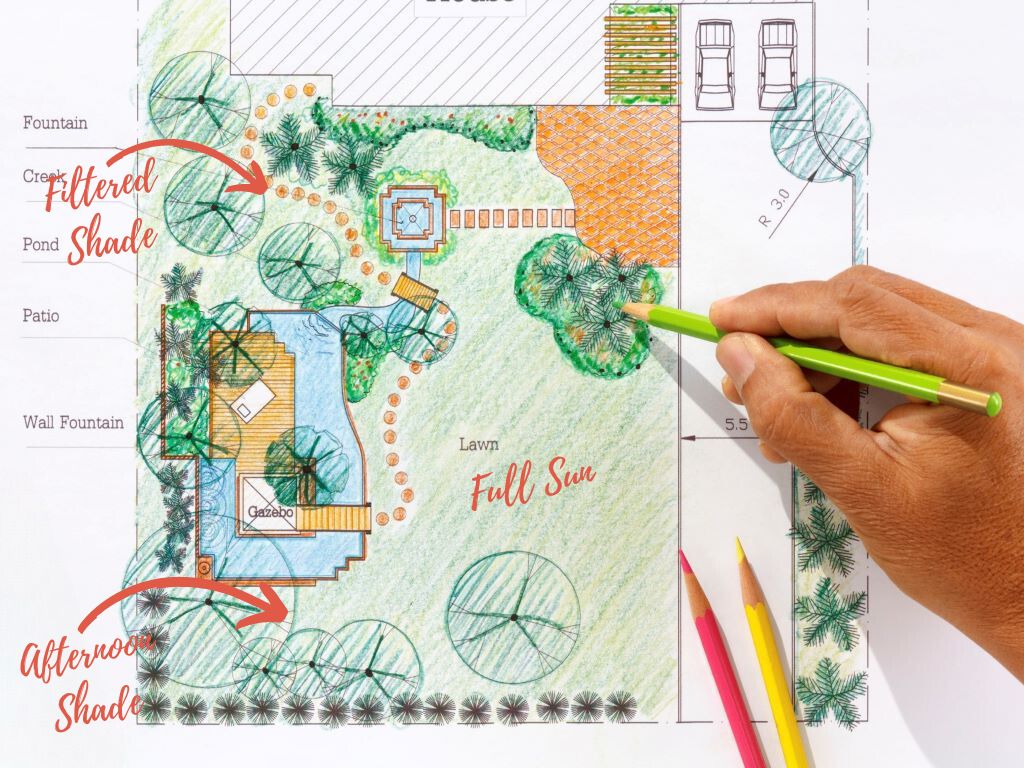
Before you plant your shady herb garden it’s important to start with observing the shade your garden produces throughout the day. Track which areas receive sunlight and for how long. I find it easiest to draw a picture of my garden and mark each area as full sun, partial shade and full shade. Time to get out those colored pencils!
Now group together the herbs that you want to grow that also have similar light requirements. This will ensure the best growing conditions for all of your shade-tolerant herbs.
Most of all, remember to give yourself and your herbs some grace. Observe their growth and move them to another location if your first spot isn’t working. Gardening is interactive so play with your herb placement and have fun.
Top Herbs That Thrive in Shade
There are plenty of herbs that tolerate shade and a handful even prefer shade. Here are some of the best options for a shady herb garden:
Chervil
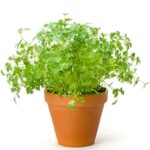
Chervil is a delicate, fern-like herb with a mild licorice flavor. It grows well in cool, partially shaded environments. To grow chervil in your garden, sow the seeds directly in the ground, and keep the soil moist until the seeds germinate. It is used similarly to parsley and makes a delicious addition to salads and sauces.
Chives
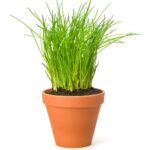
Chives are easy-to-grow perennials that have a mild onion-like flavor and can add a pop of flavor to many dishes. While chives prefer full sun, they don’t like intense heat so during the hottest part of summer chives do well in partial shade. To grow chives, remember to keep the soil well-drained and fertilized.
Cilantro
Cilantro is another herb that likes the sun but hates the intense heat. When the temps are too hot, it will bolt resulting in a bitter flavor. So growing cilantro in a shady but bright spot (partial shade) will give the plant some relief and give you better tasting leaves. Cilantro is perfect for adding fresh flavor to your favorite dishes and is used in a lot of Mexican dishes. To grow cilantro, plant the seeds directly in the soil, and keep the soil consistently moist.
Lovage
Lovage actually prefers a shady area and will thrive in your shade garden. Just make sure you start with a well-drained and organically rich soil to ensure this perennial returns every year. With its sweeter and strong celery-like flavor, it is a great addition to soups, stocks, and salads. To grow lovage, start from seeds or seedlings and maintain a consistent watering schedule.
Lemon Balm
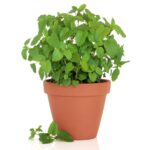
Lemon balm is a beautifully scented herb that loves the shade. It grows into a small bush, up to 2 feet tall, which makes it perfect for your shade garden backdrop. This sweet herb is used for making tea and adding flavor to fish, pork and egg dishes. To grow lemon balm, start from seeds or seedlings, and keep the soil moist and well-drained.
Mint Varieties
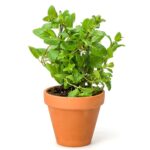
Mint is a vigorous grower and while it prefers a sunny location it can thrive in partial shade. While it’s available in various more obscure flavors like chocolate, apple, and orange the most common herb garden mints are peppermint and spearmint. You can start mints from seed but it is most easily grown from stem or root cuttings. Caution though, mint is a spreader and must be confined to keep it from taking over your shade herb garden.
Parsley
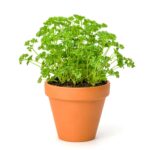
Parsley is a popular culinary herb that grows well in the shade, making it an ideal addition to your shaded herb garden. Simply plant parsley seeds or seedlings in moist, well-draining soil, and enjoy this flavorful herb. Parsley is often seen as a garnish. However, this herb blends well with others so works well to flavor stews, soups, and other vegetables.
Sweet Woodruff
Sweet woodruff loves damp, shady spots in your garden. It is usually used as a ground-covering herb, producing delicate fragrant white flowers. Sweet Woodruff has a light vanilla flavor and can be used in baking and beverages. Plant divisions of sweet woodruff in moist, well-drained soil for the best results. Once established this hardy herb requires little attention and can withstand dry conditions.
French Tarragon
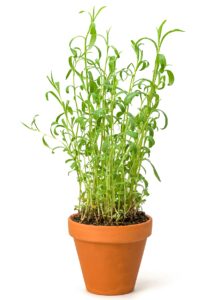
Tarragon is an aromatic herb with a unique anise-like flavor that can handle partial shade. It is primarily used to flavor vinegar, oils, marinades, and salads. True French Tarragon produces sterile seeds so should be grown from cuttings or divisions. The tarragon sold as seeds is less flavorful. Make sure your planting location has well-drained soil as tarragon does not like wet feet.
Herbs that Tolerate Some Shade
While this second list of herbs prefer a home in the full sun, they will also grow well in a lightly shaded location. They are especially good plants for your garden if you have a spot that only receives a few hours of direct sunlight each day.
Bay Laurel
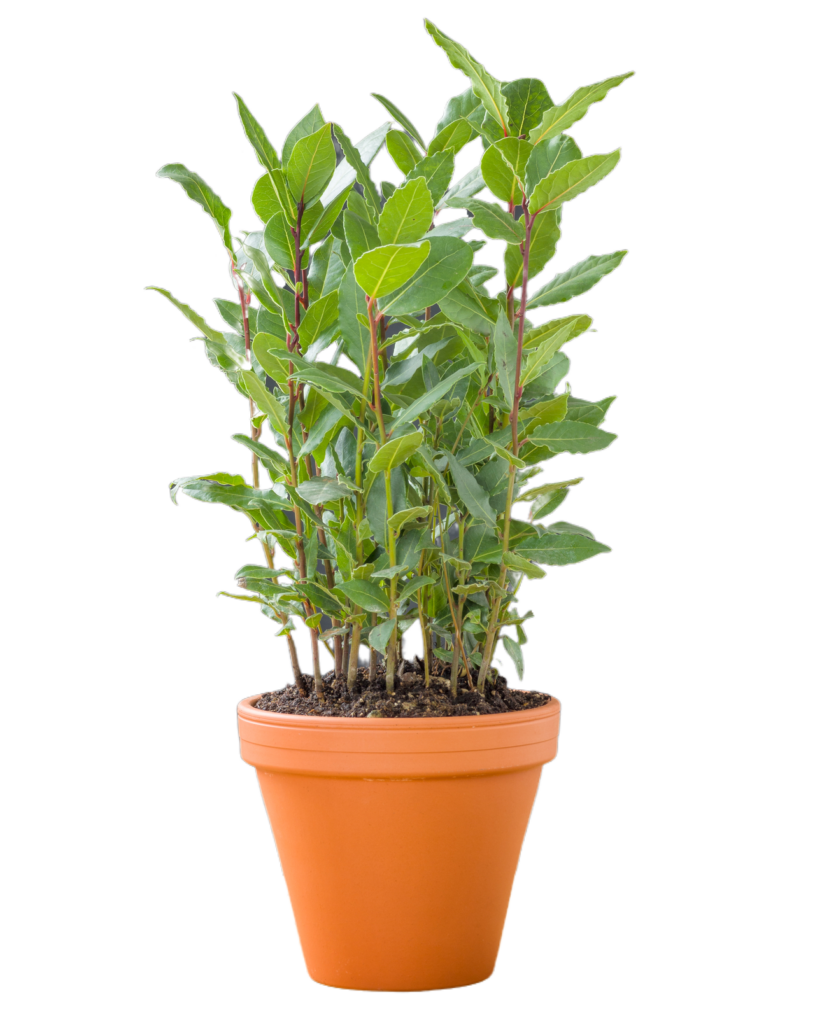
Bay Laurel is a woody herb that thrives under dappled sunlight. In warmer climates (zones 8 plus) it is a beautiful glossy shrub, while in the north you should grow it in a large pot that you can move indoors in the winter. Most people use dried Bay Leaves when cooking, especially for seasoning soups and stews. Ensure it has well-draining soil, especially when grown in a pot, and prune it regularly to maintain its shape.
Bergamot (Bee Balm)
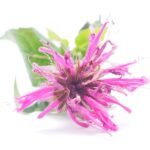
Bergamot, also known as Bee Balm, is one of my favorite herbs to plant in a flower bed simply for its beautiful blooms. The bright flowers attract bees and butterflies. It can grow in partial shade and grows up to 4 feet tall. Most gardeners plant this herb for unique flowers and as a backdrop in garden beds. However, it also can be used in teas. Bee Balm is a perennial that can be easily started from seed or root divisions.
Borage
Borage is a self-seeding herb that can thrive in partial shade. Its blue flowers are not only attractive but edible, adding both color and flavor to your salads. The fresh foliage adds a cucumber-like flavor to salads, soups, and beverages. It’s rarely used dried. Make sure it has well-drained soil and keep an eye on its growth, as it may spread in your garden. Borage is an annual easily grown from seed.
Catnip
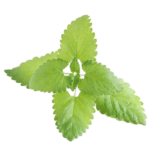
Famous for its effect on cats, catnip grows well in bright filtered light. You can also use its leaves in herbal teas for its mild sedative properties. It is a hardy perennial that can be grown from seed, stem tip cuttings or divisions. Catnip has a tendency to get a bit wild so make sure you prune regularly to keep it in shape.
Chamomile
While Chamomile likes lots of sunshine, it’s another one of those herbs that don’t like heat. So during the hot days of summer, this herb really appreciates afternoon shade. This fragrant herb goes best from already-started plants in a well-drained area of your garden. It also does well in pots. Chamomile is most commonly used to brew tea that is believed to aid sleep, relieve anxiety, and calm upset stomachs.
Dill
While dill prefers full sun, it is a popular herb that can handle light shade. Its delicate leaves and yellow flowers make it an aesthetically pleasing addition to your garden. An annual, dill grows readily from seed and will reseed itself in your garden. Dill is used in a wide variety of meat recipes as well as in pickling.
Lemon Verbena
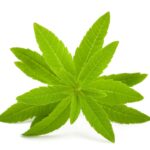
Lemon Verbena, a fragrant herb that thrives in dappled sunlight. As a tender perennial, this plant will do best in a container that can be moved inside for the winter. The leaves have a strong lemon flavor and can be added to any recipe that calls for lemons such as salads, egg and seafood dishes.
Nasturtium
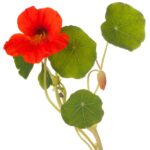
Nasturtium varieties are available both in a ground cover or small bushy plant. This herb shows off gorgeous flowers all summer, although it doesn’t bloom as prolifically in a shady spot. The peppery-flavored herb is used in green salads, potato salads, egg and seafood dishes. The nasturtium flowers are also edible so toss them on plates for decoration.
Rosemary
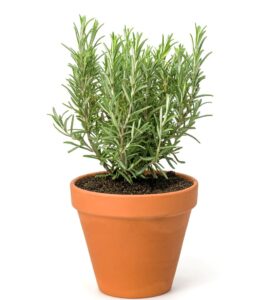
Though it prefers full sunlight, Rosemary will grow in a location where it’s getting only a few hours of sunlight if the rest of the day is a light shade. Its aromatic leaves are a staple in many dishes, and it’s also known for its medicinal properties. It is another tender perennial that will do well in a pot that can be brought in for the winter.
Sorrel
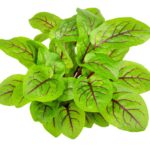
Being a cool weather lover, Sorrel is much happier in light shade when planted in hot climates or for harvesting during the heat of the summer. You might consider planting early seedlings in a sunny spot and a later planting of Sorrel in the shade so you can enjoy this leafy green all summer. Growing Sorrel is incredibly easy.
Growing Considerations for Shade Herbs
Soil Requirements
For optimal growth of your shade herbs, it’s essential to prepare your soil. The shaded ground won’t dry out as fast so it’s critical that your herb garden or container has well-drained soil. Root rot from soil staying too wet for too long is probably the most common problem shade gardeners have.
The best way to improve drainage is to add a lot of organic matter. If you don’t have a compost pile, grab a couple of bags of manure to mix into your planting area. Organic matter does double duty in that while providing good drainage, it also holds moisture so your garden won’t dry out too fast.
For container plants, use a quality potting mixture. Avoid using those giant bags of cheap potting soil unless you are going to add your own compost before using it.
Fertilizing in the Shade
Because the sun is not around to help as much with utilizing nutrients, don’t over fertilize your herbs. It’s also important for shade gardens to be feed with readily available fertilizers. I like to use a mixture of fertilizers in my shady spots. I start with a light coating of slow release fertilizer at the time of planting, then follow up with a liquid fertilizer several times through the summer. Also all that organic matter you added to the soil will provide additional nutrients.
One word of caution when fertilizing plants in the shade is don’t go crazy with high nitrogen fertilizers. That will result in the plants growing too fast and leggy. Look for well-balanced fertilizers.
Container Growing
When growing herbs in the shade, planting in containers can improve your success rate. Containers are portable which means if you misjudged the amount of sunlight to shade ratio of a spot you can move that pot and try another location.
Just make sure to provide good drainage in the bottom of the container. Start with at least an 8-inch diameter pot to ensure the soil can go a couple of days between watering and that the herb roots have plenty of room to spread out. I like to use 10-12 inch pots for most of my container herbs so I don’t have to water quite so often.
For perennials that you will bring in and out each year you’ll need to move them up in pot size every year to keep the plant from getting pot bound.
If you want to mix herbs in one container, then go big. Each individual plant needs space to spread its roots.
Watering
For your shade garden of herbs to thrive proper watering is crucial. Assuming you have provided good drainage, water your garden when the top 1/2 to 1 inch layer of soil is dry but before it dries out deeper than that. For a new herb garden, it will take a while to figure your watering cycle out.
As your herbs in the shade receive less sunlight, the soil tends to stay moist for longer periods. Monitor the moisture levels and water only when necessary, avoiding overwatering which can lead to root rot. Root rot is most common when you’ve failed to provide good drainage.
The other caution for shady herb garden watering is that the source of shade is often blocking rain. For example, a heavy tree canopy won’t let light rain through. So in some situations a shade garden might need watered more often than your garden in full sun.
It’s best to water your plants early in the day, allowing the leaves to dry out before the cooler evening temperatures set in. When you do water make sure you give the garden a good soaking. Just getting the leaves wet will not help your herbs.
Culinary Uses for Shade-Growing Herbs
Shade-growing herbs can bring a lot of flavor and variety to your cooking. Even if your garden doesn’t receive full sun, you can still grow a variety of culinary herbs that will enhance the taste of your dishes. In this section, we will explore different ways you can incorporate these shade-loving herbs into your meals.
One way to enjoy shade-growing herbs is by adding them to your salads. For example, you can mix in lemon balm leaves for a refreshing citrusy flavor. Additionally, herbs like parsley and mint are versatile and can easily be integrated into a variety of salad recipes.
Soups and stews benefit from the depth of flavor provided by shade-loving herbs. Parsley, for instance, is a staple herb in many kitchens and can be grown in part-shade areas of your garden. Lovage is another herb that is a delicious addition to soups.
Fish dishes can be enhanced with shade-growing herbs as well. French tarragon, which can thrive in the shade, pairs beautifully with fish like salmon or trout. Top your fish with a tarragon-infused butter sauce to make a delicious, savory meal.
For a unique, licorice-flavored twist, you can incorporate a shade-loving herb like chervil into your sauces or vinegar infusions. Additionally, bee balm is an excellent herb for infusing in tea or as a garnish.
Many shade-loving herbs can be used in a variety of dishes, ranging from salads and soups to fish and meat dishes. Embrace the opportunities that shade-growing herbs provide, and elevate your culinary creations with their unique and delicious flavors.
A Few More Tips When Growing Herbs in Shade
For those who are eager to cultivate a lush and vibrant garden the shade, the world of herbs offers many options . There is a diverse range of herbs that will flourish in shady environments if given just a little extra care. These shade-loving herbs add beauty and texture to shaded areas. But what I love most about the herbs in my shady garden is the aroma as I walk through the garden and the joy I get from using them in delicious foods.
Shade-loving herbs offer a delightful array of scents, tastes, and healing properties. Enjoy the soothing and calming properties of chamomile. Or discover the distinctive flavors of mint and lemon balm. The leaves of parsley and cilantro bring fresh flavors to culinary creations. Meanwhile, the enchanting fragrance of rosemary contributes to the calming atmosphere in shaded gardens.
The ability of shade-loving herbs to adapt to lower light conditions makes them ideal for urban gardens and balconies. Their versatility enables gardeners to bring life to spaces that were previously overlooked. It is important to remember that each herb has its own unique growing requirements. Understanding the specific needs of shade-loving herbs in terms of soil moisture, fertility, and drainage will greatly contribute to their success.
Growing herbs in the shade is not only possible but also rewarding. By selecting the right shade-loving herbs and providing them with the necessary care, you can create enchanting gardens filled with an abundance of flavors, fragrances, and health benefits.
